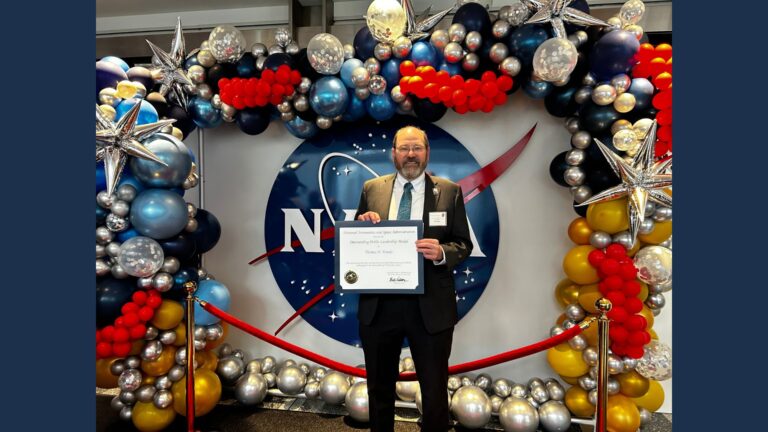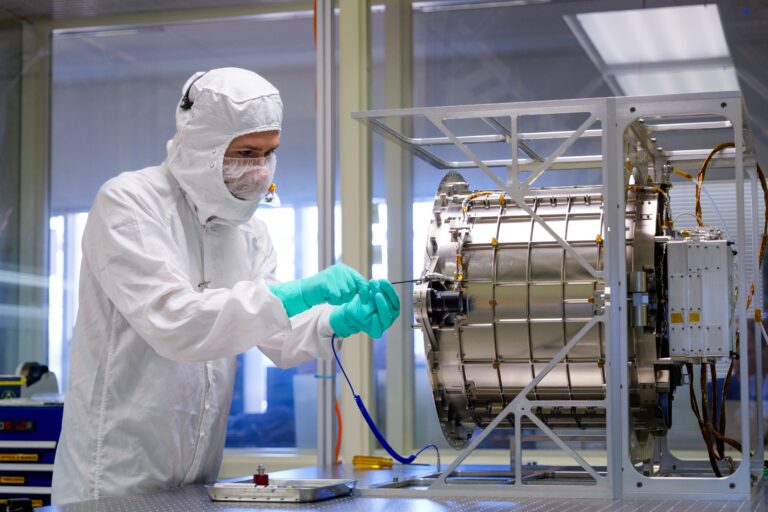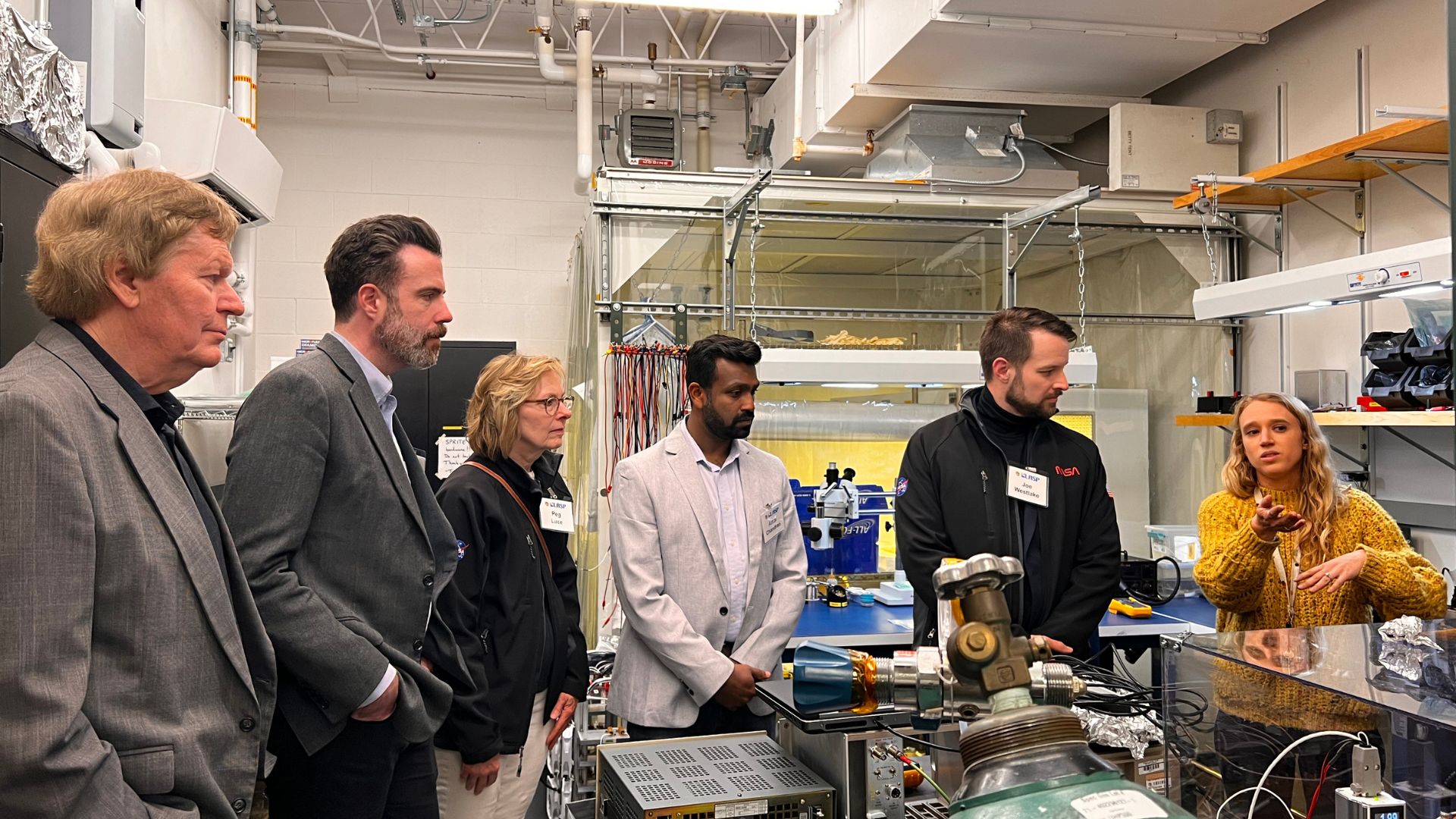
In mid-April, the Laboratory for Atmospheric and Space Physics (LASP) at the University of Colorado Boulder welcomed the leadership of NASA’s Heliophysics Division for a tour and visit. The Heliophysics Division is dedicated to studying the Sun, heliosphere, and planetary environments as elements of a single, interconnected system.
Joe Westlake and Margaret (Peg) Luce, Director and Deputy Director, respectively, of the Heliophysics Division in the Science Mission Directorate at NASA Headquarters, were accompanied by Jamie Favors, Director of Space Weather. The NASA visitors were in town for a space weather workshop and interested in gaining a better understanding of the heliophysics research and mission support at LASP.
The group toured the LASP CubeSat/SmallSat lab where they saw eight CubeSats in development including the NASA Heliophysics-funded Atmosphere Effects of Precipitation through Energetic X-rays (AEPEX), the Solar Corona Ejection Tracker (SunCET), and the DYNamics Atmosphere GLObal-Connection (DYNAGLO) missions, as well as instruments from the Integral Field Ultraviolet Spectroscopic Experiment (INFUSE) sounding rocket mission.
In the Colorado Ultraviolet Spectroscopy Program lab, LASP researcher Briana Indahl showed the group around and discussed the Supernova remnants and Proxies for ReIonization Testbed Experiment (SPRITE), which will measure the ultraviolet radiation from galaxies and stars to help scientists better understand the earliest galaxies in the universe.
The University of Colorado Boulder is the top university recipient of NASA astrophysics technology grants, with much of this funding granted to researchers at LASP. Upon leaving the lab, Westlake noted the ultraviolet spectroscopy group, one of the first to use CubeSats to conduct astrophysical research, was “pushing in the right direction.”
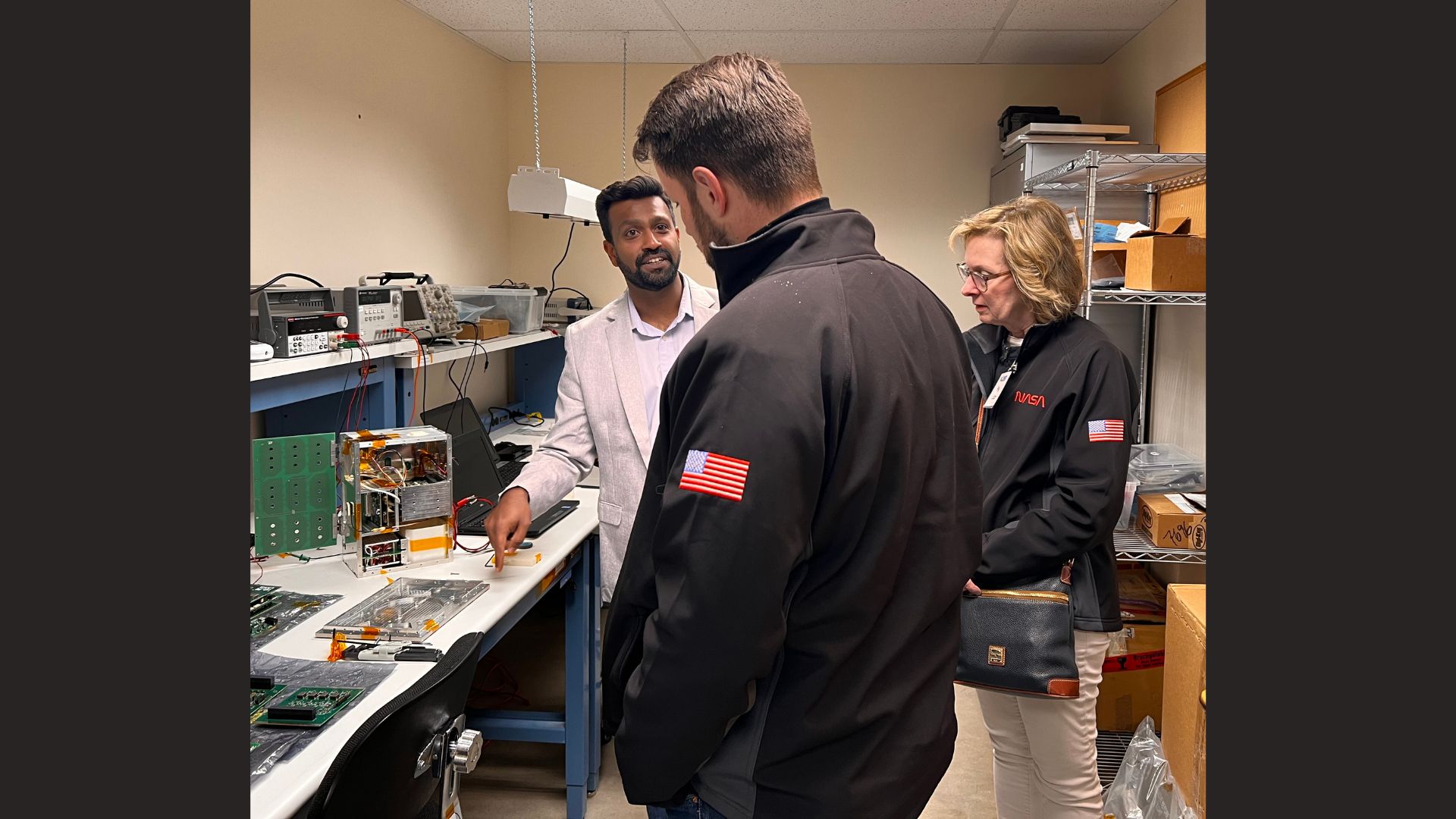
The NASA group then met with senior leadership and LASP scientists and heard remarks from LASP Director Dan Baker on CU’s space research ecosystem and the current challenges and benefits of heliophysics research. Baker thanked the Heliophysics Division for its longstanding and productive relationship with LASP. “Thank you for the support you have given us, and the exciting opportunities it has provided,” he said.
Frank Eparvier, LASP Associate Director for Science, discussed how students are involved in every aspect of LASP. “We are producing the next generation of space scientists,” he said. As one of only a few university-based mission operation centers in the world, LASP administers a student flight controllers training program through which undergraduate students can become certified command controllers on space missions, gaining valuable skills and hands-on training.
Senior Research Scientist Fran Bagenal noted the importance of undergraduates gaining research experience—opportunities that LASP provides—and how critical that training is to the future development of the U.S. aerospace and space science workforce.
“The education component is one of the core pieces here, not replicated widely, and key to the health of the space science community,” Westlake said. “The university plays an important role in that.”
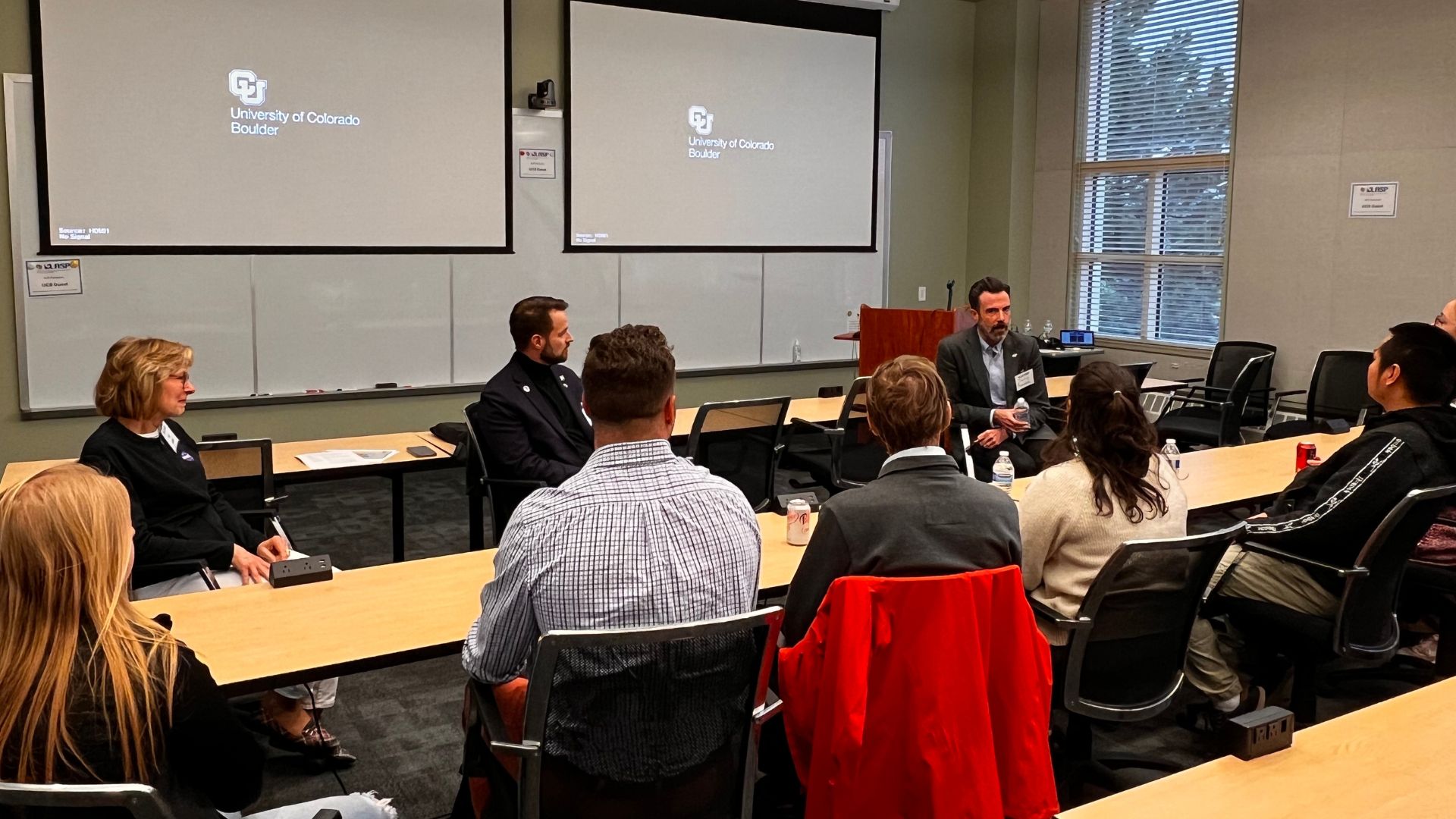
The NASA leaders ended their visit by hosting a student roundtable with LASP graduate students and early career researchers for a discussion that Westlake kicked off by asking “how NASA can better support students in space-related sciences.”
Many of the student questions revolved around how NASA is making efforts to bring in and educate a diverse younger generation, said Ethan Ayari, a LASP graduate student in physics who attended the session. Westlake and Luce described NASA’s directives to foster inclusivity and make science more accessible.
“There is a lot to be excited about in the next decade for NASA’s Heliophysics program,” said Ayari, who works with Mihály Horányi and Zoltan Sternovsky on designing and analyzing data from the Interstellar Dust Experiment (IDEX) instrument aboard NASA’s Interstellar Mapping and Acceleration Probe (IMAP) mission.
“From new advancements in open science and data sharing to upcoming missions such as IMAP, they made it obvious that we are heading towards a monumental and transformative decade,” said Ayari. “The visit was a unique opportunity that really showcases NASA’s support for LASP students, and all of us are extremely appreciative to have been able to participate.”
Westlake, a space physicist whose research focuses on planetary magnetospheres and the structure and processes that produce our local space environment, was named director of the Heliophysics Division in January 2024. Prior to that, he worked at the Johns Hopkins Applied Physics Laboratory (APL) in Laurel, Maryland.
The NASA leaders were in town for the 2024 Space Weather Workshop, which brings together Federal agencies, the academic community, the private sector, and international partners to focus on the diverse impacts of space weather, on forecasting techniques, and on recent scientific advances in understanding and predicting conditions in the space environment.
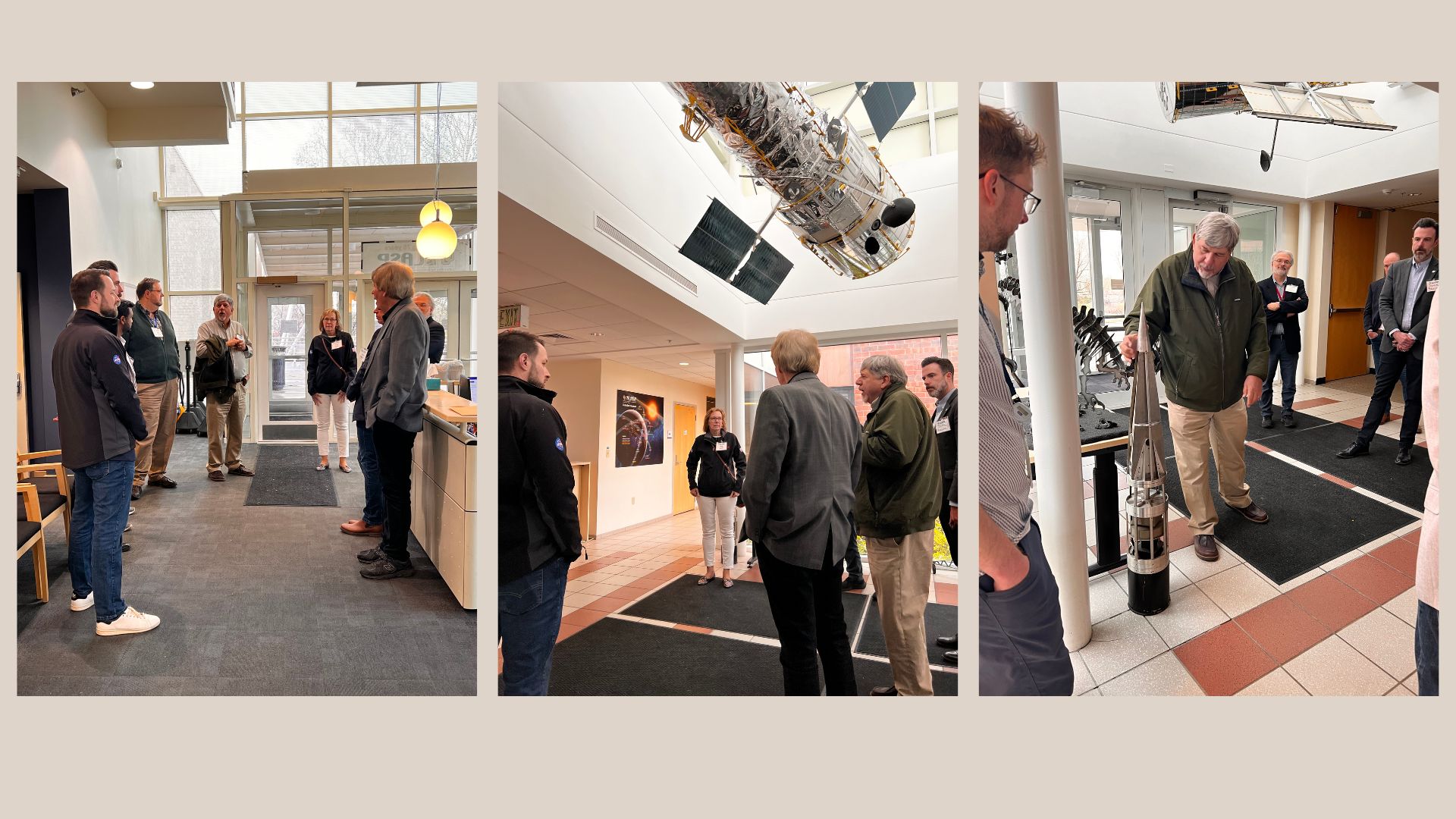
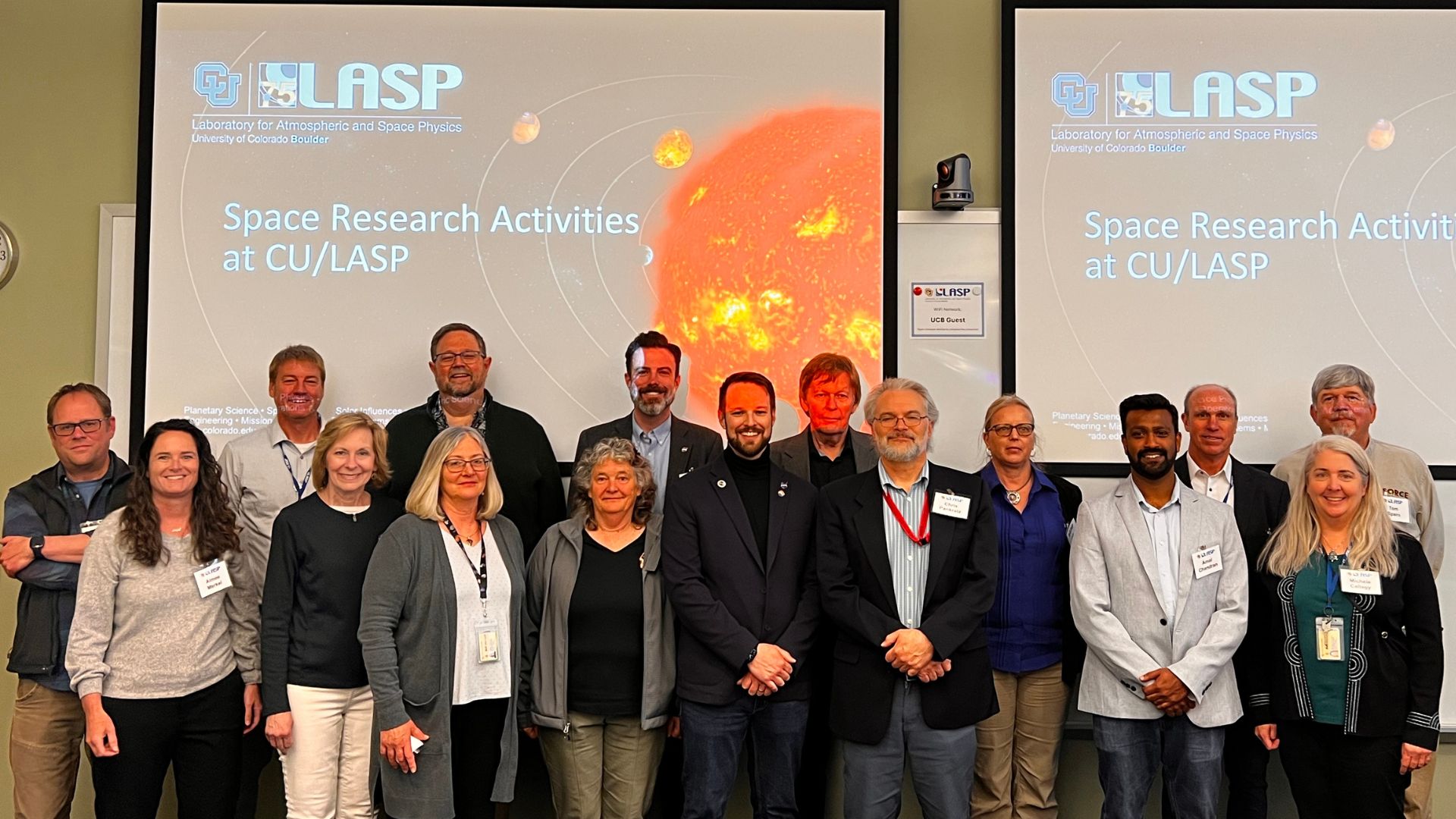
Founded a decade before NASA, the Laboratory for Atmospheric and Space Physics at the University of Colorado Boulder is on a mission to transform human understanding of the cosmos by pioneering new technologies and approaches to space science. LASP is the only academic research institute in the world to have sent instruments to every planet in our solar system.


